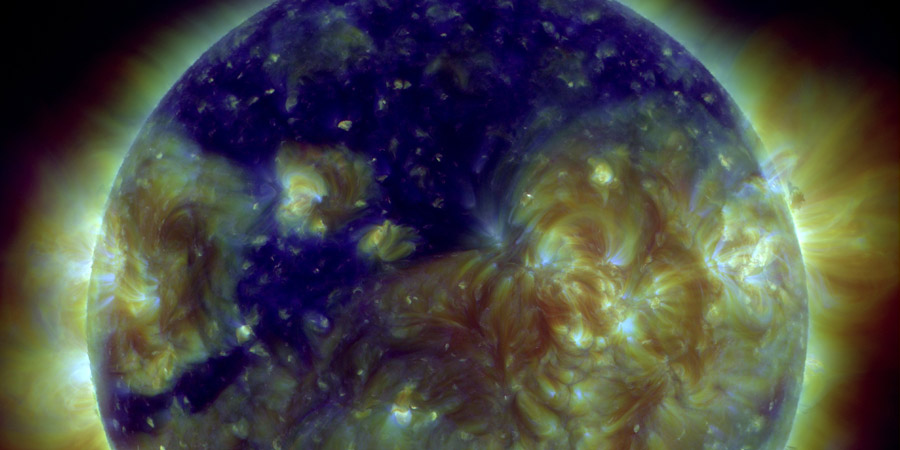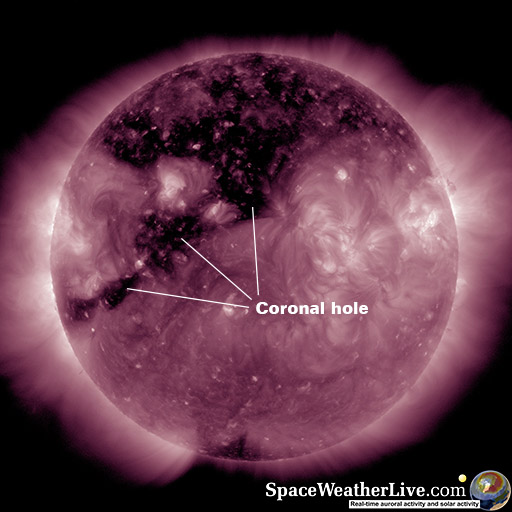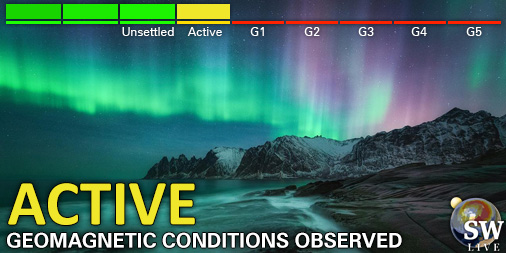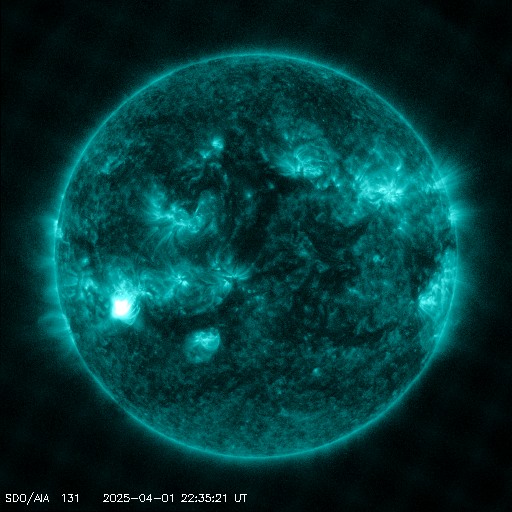Coronal hole faces Earth, Quiet Sun
Wednesday, 2 December 2015 18:16 UTC

A very large coronal hole is now facing Earth. This northern hemisphere polar coronal hole runs all the way to the solar equator and we will likely experience multiple days with enhanced solar wind conditions at Earth.
Solar wind flowing from this coronal hole will likely start to influence our planet in about 3 days from now which would be this coming Saturday. Minor G1 geomagnetic storming conditions will be possible this weekend. Also at the start of next week we should still be under the influence of this coronal hole.

Image: A large coronal hole faces Earth as can be seen on this image from NASA SDO.
If we take a look at solar flaring we can conclude that the Sun is quiet right now. Sunspot region 2458 produced a couple of weak C-class solar flare and even some minor coronal mass ejection but these are not expected to arrive at Earth. None of the sunspot regions currently on the Earth-facing solar disk are complex enough for M or X-class solar flares.
The solar wind speed is just above the 400km/s and the direction of the IMF (Bz) is mostly southward. The Kp-index is not expected to go above 3 in the next 24 hours but this is enough for decent high latititude aurora displays.
Thank you for reading this article! Did you have any trouble with the technical terms used in this article? Our help section is the place to be where you can find in-depth articles, a FAQ and a list with common abbreviations. Still puzzled? Just post on our forum where we will help you the best we can!
Current data suggests there is a slight possibility for aurora to appear at the following high latitude regions in the near future
Arkhangelsk, Norilsk, VorkutaLatest news
Latest forum messages
Support SpaceWeatherLive.com!
A lot of people come to SpaceWeatherLive to follow the Sun's activity or if there is aurora to be seen, but with more traffic comes higher server costs. Consider a donation if you enjoy SpaceWeatherLive so we can keep the website online!

Latest alerts
04:03 UTC - Hemispheric Power Index
The OVATION model predicts the Hemispheric Power Index to reach 50GW at 04:56 UTC
01:45 UTC - Geomagnetic activity
Active geomagnetic conditions (Kp4) Threshold Reached: 01:32 UTC
Tuesday, 1 April 2025
22:51 UTC - Solar flare
Moderate M2.5 flare
22:30 UTC - Radio Blackout
Minor R1 radio blackout in progress (≥M1 - current: M1.45)
07:15 UTC - 10cm Radio Burst
Begin Time: 01/04/2025 06:45 UTC Maximum Time: 01/04/2025 06:45 UTC Duration: 1 minutes. Peak flux: 190 sfu
Space weather facts
| Last X-flare | 2025/03/28 | X1.1 |
| Last M-flare | 2025/04/01 | M2.5 |
| Last geomagnetic storm | 2025/03/27 | Kp5 (G1) |
| Spotless days | |
|---|---|
| Last spotless day | 2022/06/08 |
| Monthly mean Sunspot Number | |
|---|---|
| February 2025 | 154.6 +17.6 |
| April 2025 | 147 -7.6 |
| Last 30 days | 128.8 -21.8 |




